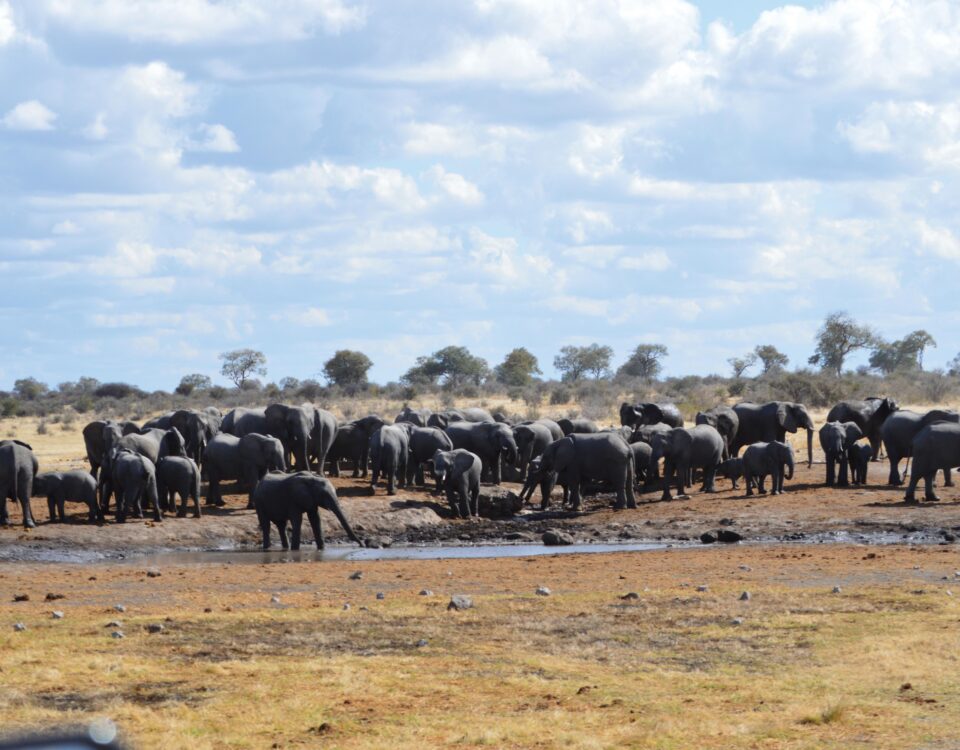Living diamonds – the Sperrgebiet’s natural riches
July 5, 2012Uukwaluudhi Conservancy – A royal dream becomes reality
July 5, 2012The pelicans along the Namibian coastal and inland flood plains, pans and larger dams are far too large, conspicuous and flamboyant to be overlooked, says Susann Kinghorn, a freelance writer based in Swakopmund. Nevertheless, they have been sorely neglected by local researchers.
Not only are the pelicans found in Namibia larger than Eurasian species, but they are also by far the largest marine birds in the country. The white pelican, Pelecanus onocrotalus, confusingly called in German the Rosapelikan (pink pelican) is the main species found in Namibia. The pink-backed species, Pelecanus rufescens, is encountered only on rare occasions.
Pelicans drink saline water, excreting the salt through their salt glands. Their menu is somewhat monotonous, consisting solely of fish, although it has been observed that they also consume the eggs and nestlings of Cape cormorants, with which they share the guano platform in the vicinity of Walvis Bay as breeding ground. Pelicans either feed alone, skimming fish from the water as they swim along, using their bill as a fish net, or in groups by forming a V-shape in the water, herding schools of fish into shallow waters to feed more easily. Feeding takes place by tipping the head forward to empty the water out of their pouch, then swallowing the fish caught in it. The pelican’s bill is not used for storing food (it is therefore not a crop), but rather as a temporary container for the fish before being swallowed.
While the white pelican is an excellent swimmer, unlike the brown and Peruvian pelicans, it cannot dive for its meals by soaring above the water and then plunging down. The reason for this inability is the strong air pressure of the pneumatic cells present in the lower skin tissue. These pneumatic cells also form the lungs of the pelicans, as well as numerous airbags connected to the lungs, which result in a balloon effect that keeps the pelicans afloat.
Pelicans are often seen hovering around fishermen north of Swakopmund, waiting for bait leftovers. They are falsely accused of competing with fishermen and the commercial fishing industry. While a pelican with a weight of ten kilograms can gulp down one kilogram of fish a day, numerous studies have shown that for the most part pelicans eat fish that is not sought after by humans.
Prior to the building of the guano platform in the vicinity of Walvis Bay, coastal pelicans used to breed only on sandy islets at Sandwich Harbour. Since its construction, the guano platform has become their main breeding ground.
Pelicans lay two to four chalky white oval-shaped eggs in a nest, lined mainly with seaweed, sticks and feathers. Unfortunately, due to people leaving their garbage on the beaches, pelican nests have also been found to consist of human debris, mainly plastics.
After an incubation period of 36 to 45 days, during which the parents alternatively guard the nest, the naked pink chicks hatch. Initially, they are sheltered by both parents against the sun. After the fourth day, they turn black, then blackish-brown. Only the oldest chick survives, as it kills the younger ones.
Pelicans might not be the most beautiful seabirds around, but their graceful flight more than compensates for their ‘ugliness’. Unfolding their gigantic wings to a span of up to nearly four metres, they typically fly in formations reminiscent of Second World War bomber planes, forming a V-pattern. They are, however, also solitary fliers. It is fascinating, if not hilarious, to see how they stretch out their long wings, at the same time taking a run-up on their sturdy pink legs and yellow, webbed feet. After this major effort to get their heavy bodies airborne, once in the air, they become the most elegant of fliers, reaching altitudes of up to 1 700 m.
Like most animals with a physical disability, handicapped pelicans can also become quite tame, possibly aware that they are at the mercy of others. In the eighties, Elke Erb rescued a pelican with a broken wing from being beaten to death by ignorant people in the vicinity of her camel farm east of Swakopmund, near the Swakop River. The pelican became tame and so attached to her that it slept on the mat next to her bed. It became extremely protective towards her and her daughters, so much so, that it chased away any male daring to approach them.
This pelican did not only have a soft spot for females, but for defenceless creatures in general. Such as when Elke Erb’s mastiff gave birth to a litter of puppies. Whenever the mother mastiff tried to snatch away the little ones’ food, the pelican vigorously interfered, and very often, when the mastiff’s handling of the youngsters became too rough, the young ones would disappear under the pelican’s wing. Unfortunately, this unusual bond of friendship came to an abrupt end when the pelican was beaten to death in the neighbourhood of the camel farm. Nobody ever thought of suing the culprits for their cruel deed.
Today, however, it would have been a different story, since white pelicans have since been declared an endangered species. As a result, many people have become aware of their value.
This article appeared in the 2004/5 edition of Conservation and the Environment in Namibia.

